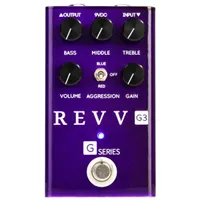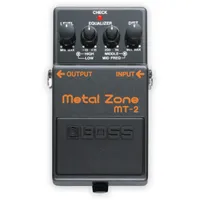Best distortion pedals 2025: Dirty up your tone with my top choices
It's time to get heavy with my top-rated distortion pedals for metal, rock, bass, and more
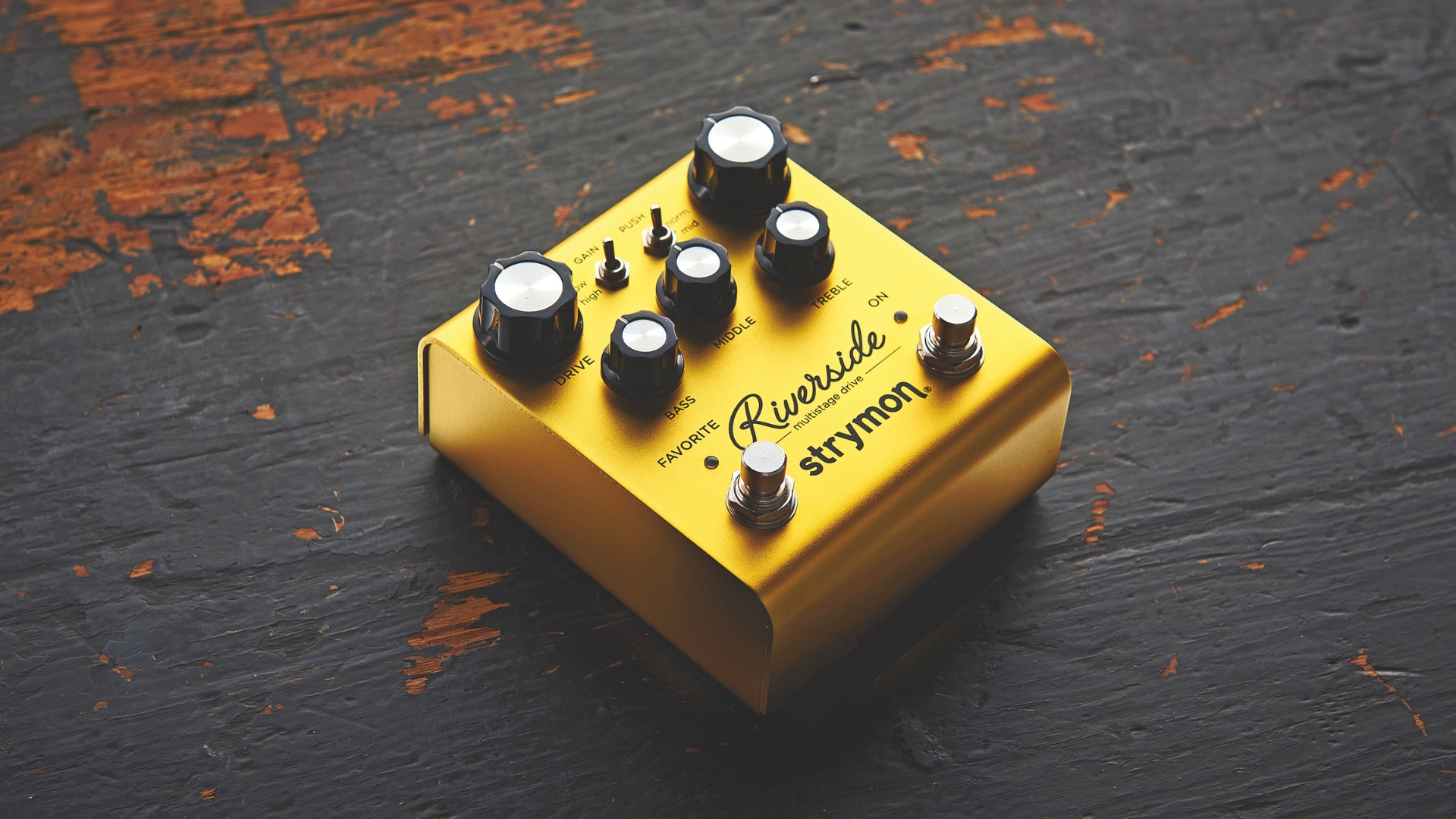
When it comes to crafting your tone, there are few effects that are more crucial to a guitar sound than distortion. For many, distortion is one of the first pedals you will own, so picking one of the best distortion pedals is a great way to start your pedal journey on the right foot. If, on the other hand, you’re a pedal-pro and looking to expand your arsenal of dirt, there are many different styles of distortion, which may complement existing pedals you have or work particularly well with your guitar and amp.
Over the years, I've had a myriad of distortion pedals on my board from budget friendly offerings through to boutique digital units that can cover a wide variety of sounds. That's the thing with a good distortion pedal, they can cover a lot more ground than you might think, from heavy metal tones through to more overdriven sounds for rock guitar.
Whether you're a beginner or a veteran, every guitarist should own a ProCo Rat 2. It's versatile enough to do everything from overdriven sounds to fuzzed-out nastiness, and is well known for playing nicely with other gain stages, which is why I've placed it as the best overall. Although the Rat isn't that expensive, you can get great distorted tones for relatively little cash with the TC Electronic Dark Matter. I had one on my 'board for years, and it covered everything from djent riffs to hard rock covers.
If you're new to distortion pedals, check out our FAQs section, which answers loads of common questions you might have on the subject. To see the very best guitar distortion pedals available right now, just keep on scrolling...
Save big on guitar gear and stock up on essentials for less with our handpicked Black Friday guitar deals highlights.
My top picks
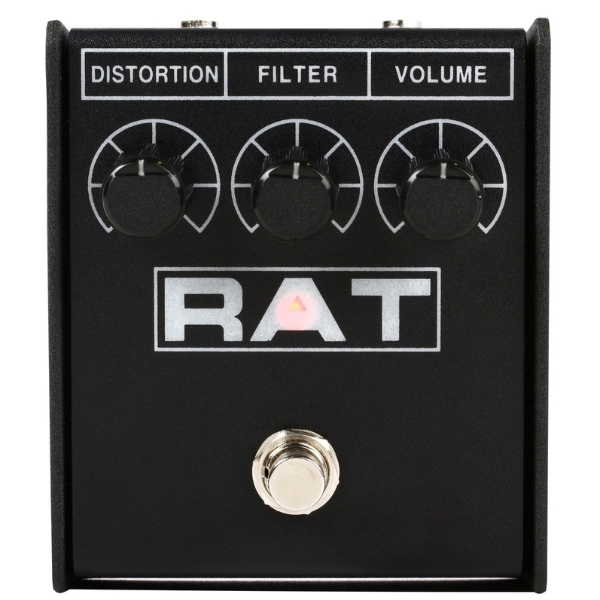
Probably the most popular distortion pedal of all time, there's no getting away from the inherent versatility and superb sound quality of a ProCo Rat 2. It's relatively low cost and pairs nicely with other pedals, making it a must-have for any guitar player.
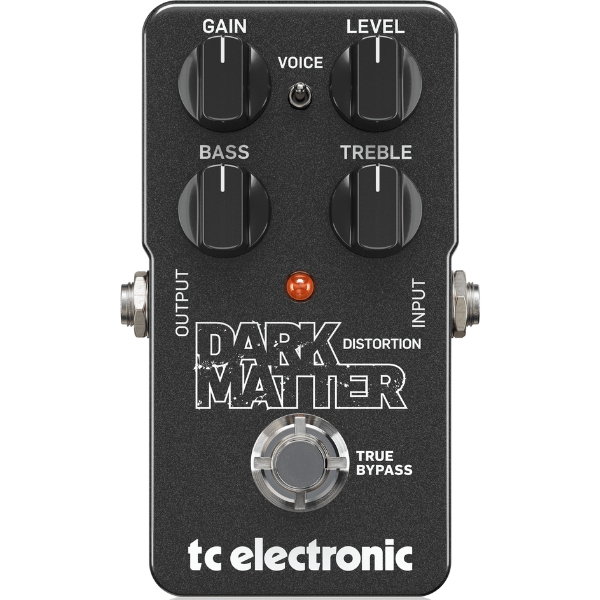
If you're looking for a distortion pedal that's super versatile and doesn't cost the earth, I'd go for the TC Electronic Dark Matter. I had one on my pedalboard for years and it saw me through thick and thin, weather playing chugging heavy metal, blues leads, or anything in between.

If you want to get heavy with your guitar tones whilst still retaining clarity, I'd highly recommend you check out the Walrus Audio Iron Horse. It delivers searing distortion tones with a thick tone that's great for riffing and rapid-fire lead work.
Best overall
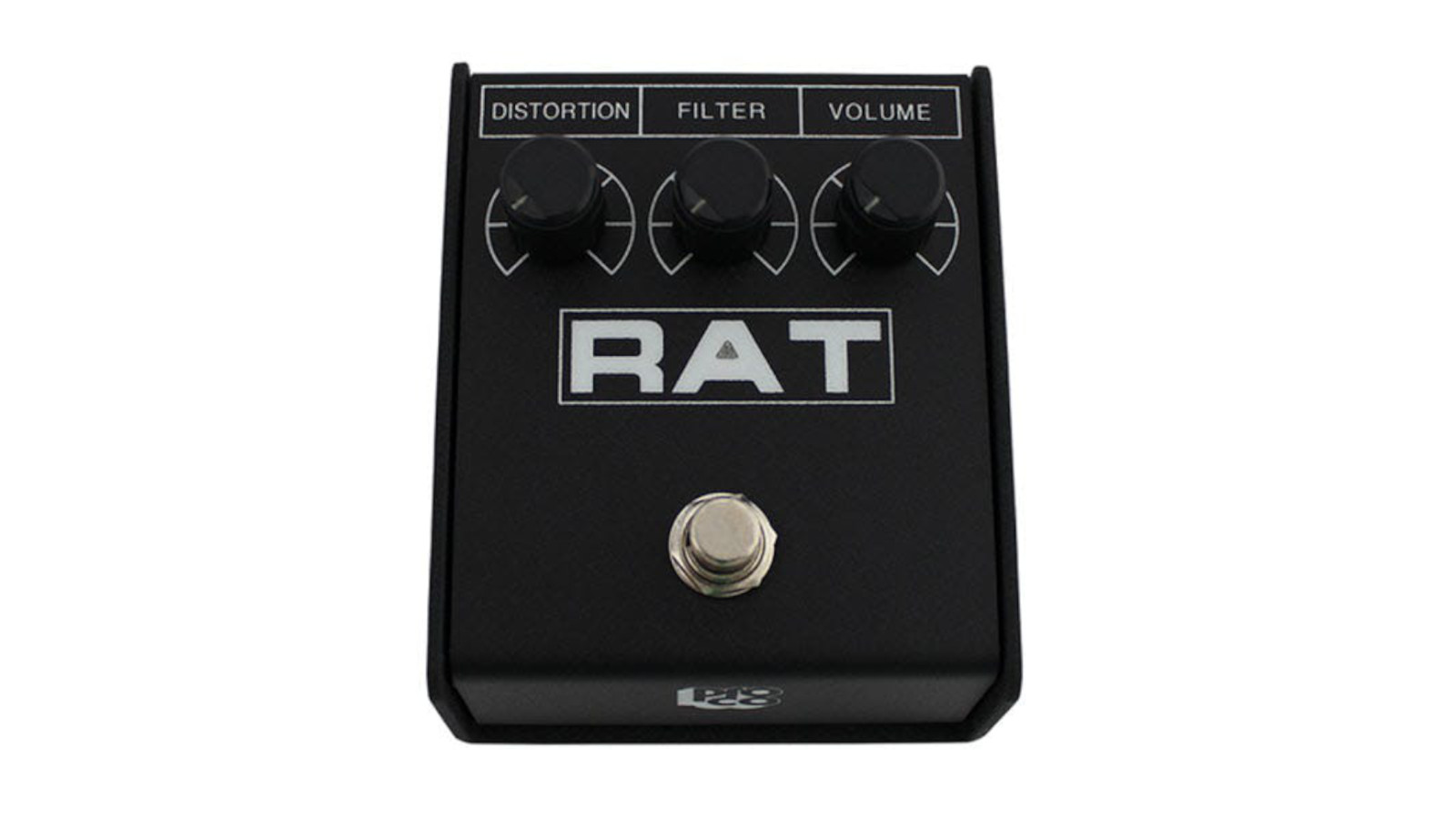
1. ProCo RAT 2
Our expert review:
Specifications
Reasons to buy
Reasons to avoid
The original RAT may be showing its age, but it's housed in a bombproof enclosure and is still relatively cheap to get your hands on.
At lower gain settings, it's a great dirty boost. Meanwhile its filter knob allows you to tighten up the tone. When used in conjunction with the guitar's tone knob, it's very usable for players from blues to hard rock.
Of course, should you dime it, the RAT is more than happy to push your amp into meltdown, whether that's a half-stack or a bedroom practice amp.
Should you want a smaller footprint, there's also the diminutive Mini RAT. Other companies like TC Electronic also make clones like the Magus that combine the original and Turbo RAT circuits into one unit.
Best budget
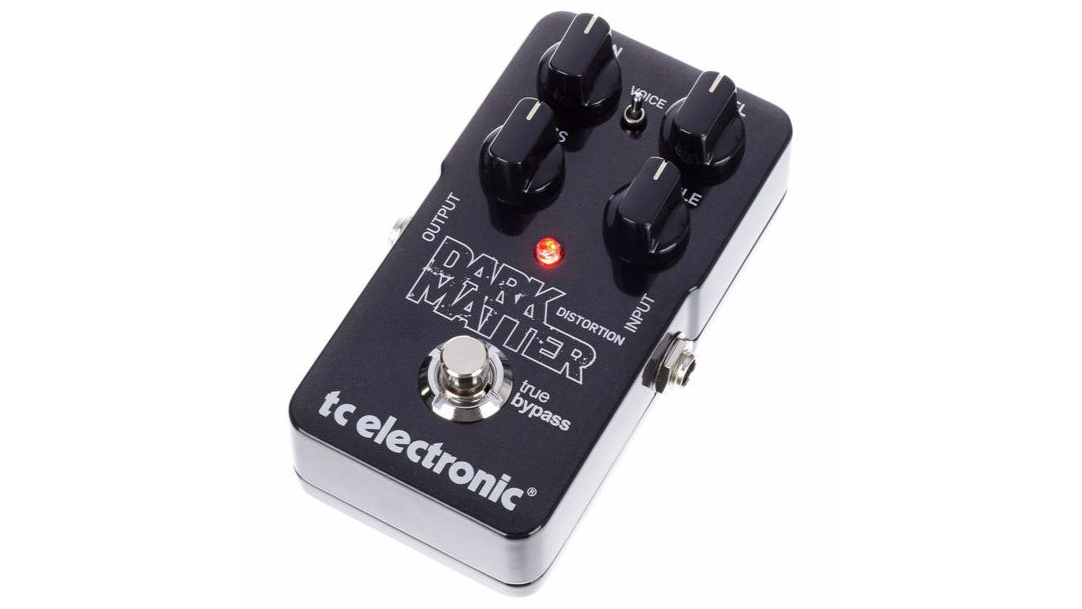
2. TC Electronic Dark Matter
Our expert review:
Specifications
Reasons to buy
Reasons to avoid
This vintage-voiced distortion from the folks at TC Electronic is easily one of the best distortion pedals on the market. It's affordable, reliable, and, most importantly, it sounds killer!
This pedal is lively and dynamic, delivering a face-melting amount of gain when pushed. Better yet, despite its modest price tag, it can be seen at the feet of some of the most prominent artists. Used by everyone from Rodger Glover of Deep Purple, Jordan Rudess of Dream Theater, Volbeat axeman, Rob Caggiano, and Rammstein's Richard Kruspe, this pedal can be found on the biggest stages around the world.
So, if you are looking for a simple distortion that won't break the bank – and one that's endorsed by some pretty big names – look no further than the TC Electronic Dark Matter.
Best for metal
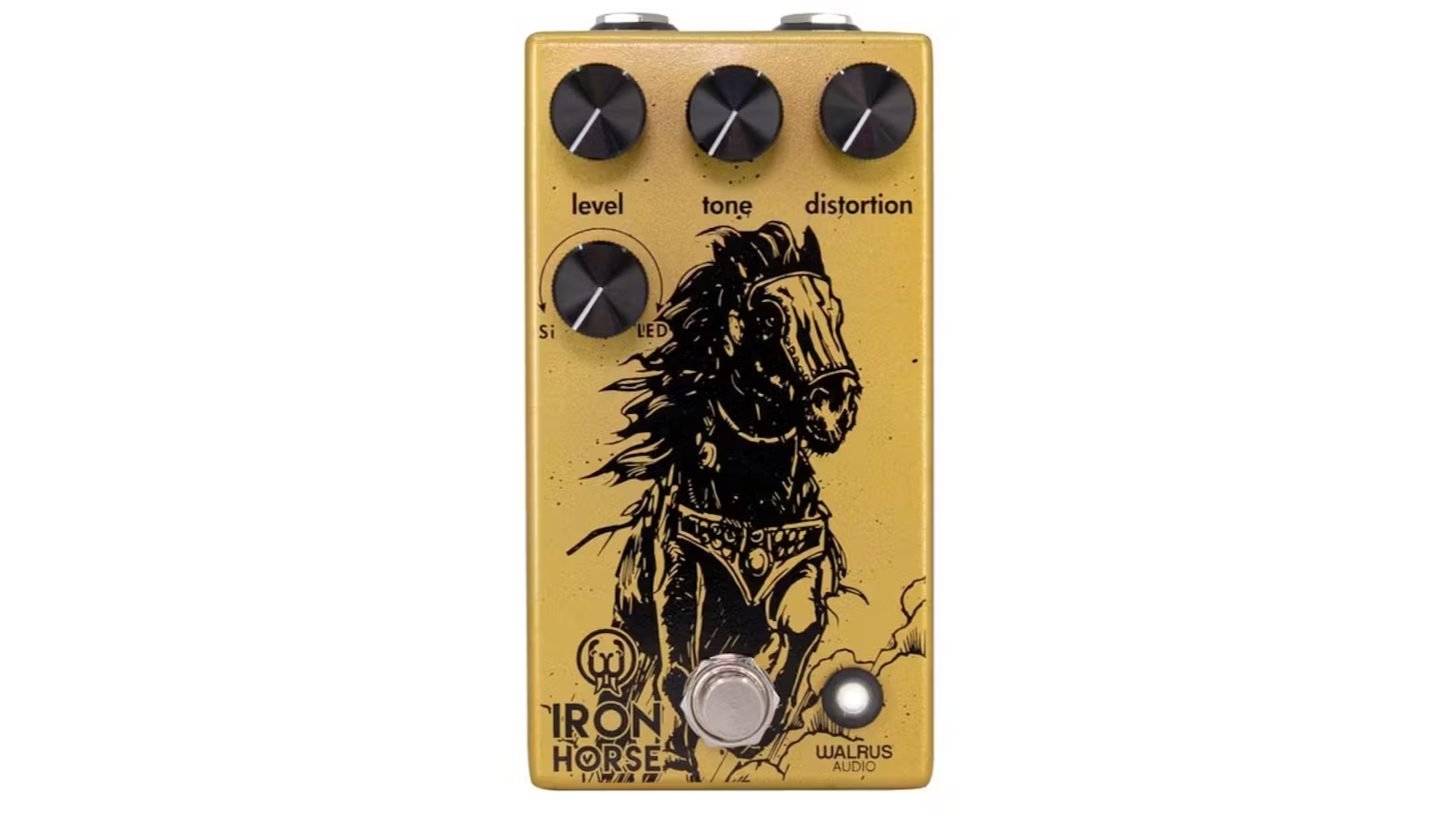
3. Walrus Audio Iron Horse V3
Our expert review:
Specifications
Reasons to buy
Reasons to avoid
The beloved Iron Horse is now on its third iteration and is more versatile than ever. While this version stays true to the original, retaining the thick and meaty distortion Walrus Audio is known for, the mode switch has been replaced with a blending knob, giving you access to even more tones.
The Si/LED knob allows you to blend between silicon and LED diode clipping. When the dial is set all the way to the left, the pedal will be in silicon mode, all the way to the right and it's in LED mode and of course, in the middle, it will be a blend of the two.
For us, this pedal offers players a rich and complex distortion that's perfect for heavy riffage or soaring lead lines.
Best for bass
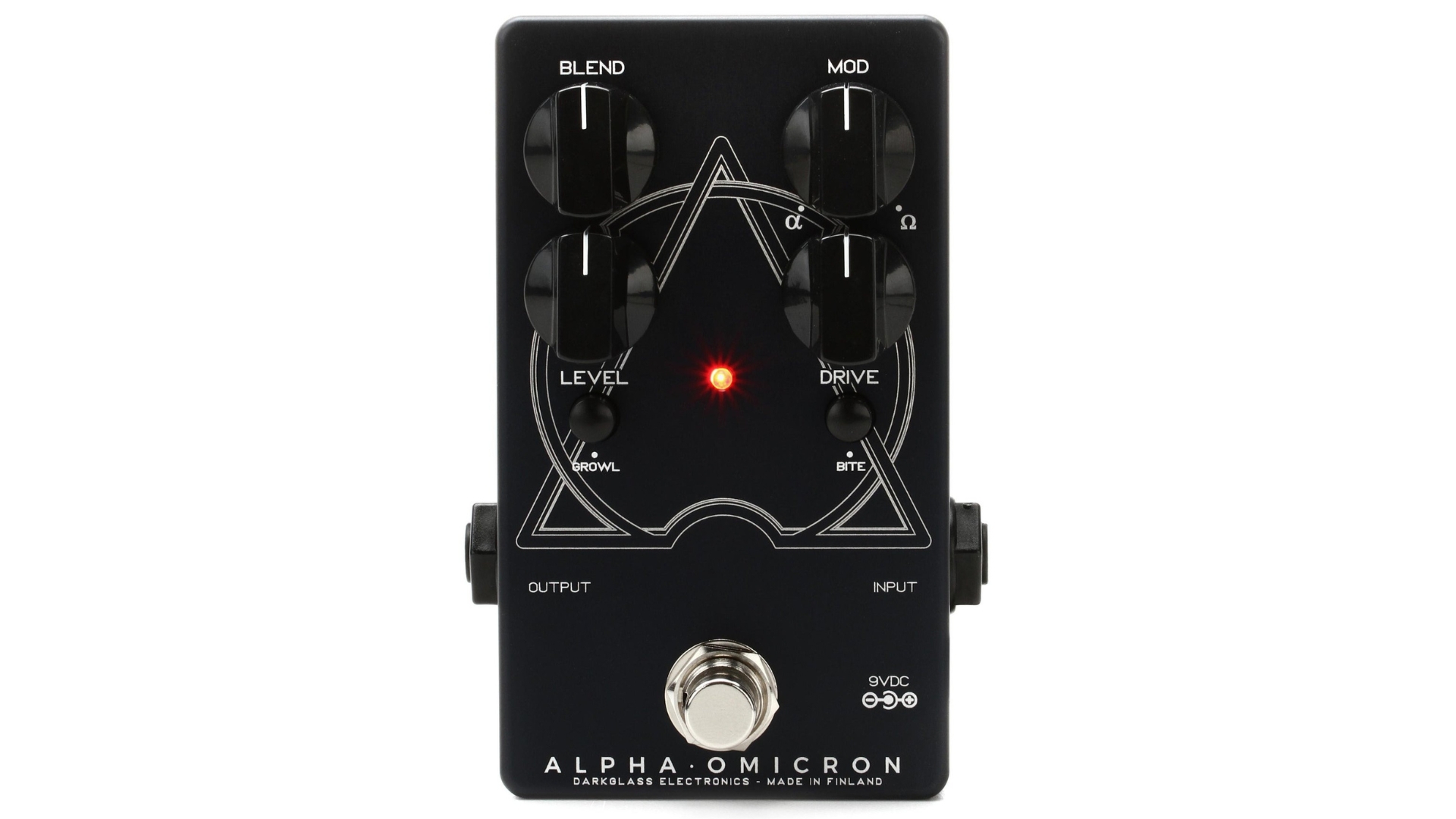
4. Darkglass Alpha Omicron
Our expert review:
Specifications
Reasons to buy
Reasons to avoid
There's precious few dedicated bass distortion pedals, so if you want something designed for your instrument then you should definitely have a look at the Darkglass Alpha Omicron. It's based on the popular Alpha Omega, but shrinks it down to a more pedalboard friendly size and reduces the price point.
The fact that you can blend two flavors of distortion alongside your dry signal makes this an ultra versatile pedal. You get the fuzzier tones of the Alpha distortion while the Omega end of the knob delivers a tone more suited to modern metal. It doesn't just do high gain stuff either, I found it sounded surprisingly good on lower settings with a very musical low grit tone that's great for adding a touch of a saturation to your clean sound.
Some users will lament the use of side jacks, but when it sounds this good it's something I can overlook. Unless you've got a super busy pedalboard you should find with some flat patch cables it'll still fit nicely into your rig. Add in the additional growl and bite switches which add some low end and a high mid boost respectively, and you've got a superbly versatile bass distortion for nearly every scenario.
Best for lead

5. Strymon Riverside Multistage Drive
Our expert review:
Specifications
Reasons to buy
Reasons to avoid
While it may be daunting when you read through the feature list, it’s hard to argue that the Strymon Riverside Multistage Drive pedal is about the most versatile and flexible distortion on the market. At its core, the Riverside still has all the prerequisite features of any good distortion: drive, level, EQ, and true bypass, but also has far more options.
Customization is the key USP of the Riverside, with two independent gain stages (pre and post gain) giving you precision control to dial in everything from subtle to crushing distortion. The shape and EQ controls allow you to mold your distortion to your precise tonal requirements, while the different clipping options (asymmetrical & symmetrical) provide different flavors of distortion.
Analog purists may be turned off by the idea of ‘digital algorithmic clipping’ being utilized in the Riverside, but they can rest assured that this is only used to supplement the analog circuitry that builds the backbone of your distortion – it works surprisingly well.
Top all these features off with more digital wizardry in the form of cabinet and IR simulations via USB and MIDI integration, and you’ve got an unbelievably powerful distortion. Is it too much for some? Perhaps. Should you buy one anyway? I would say, yes!
Best for rock
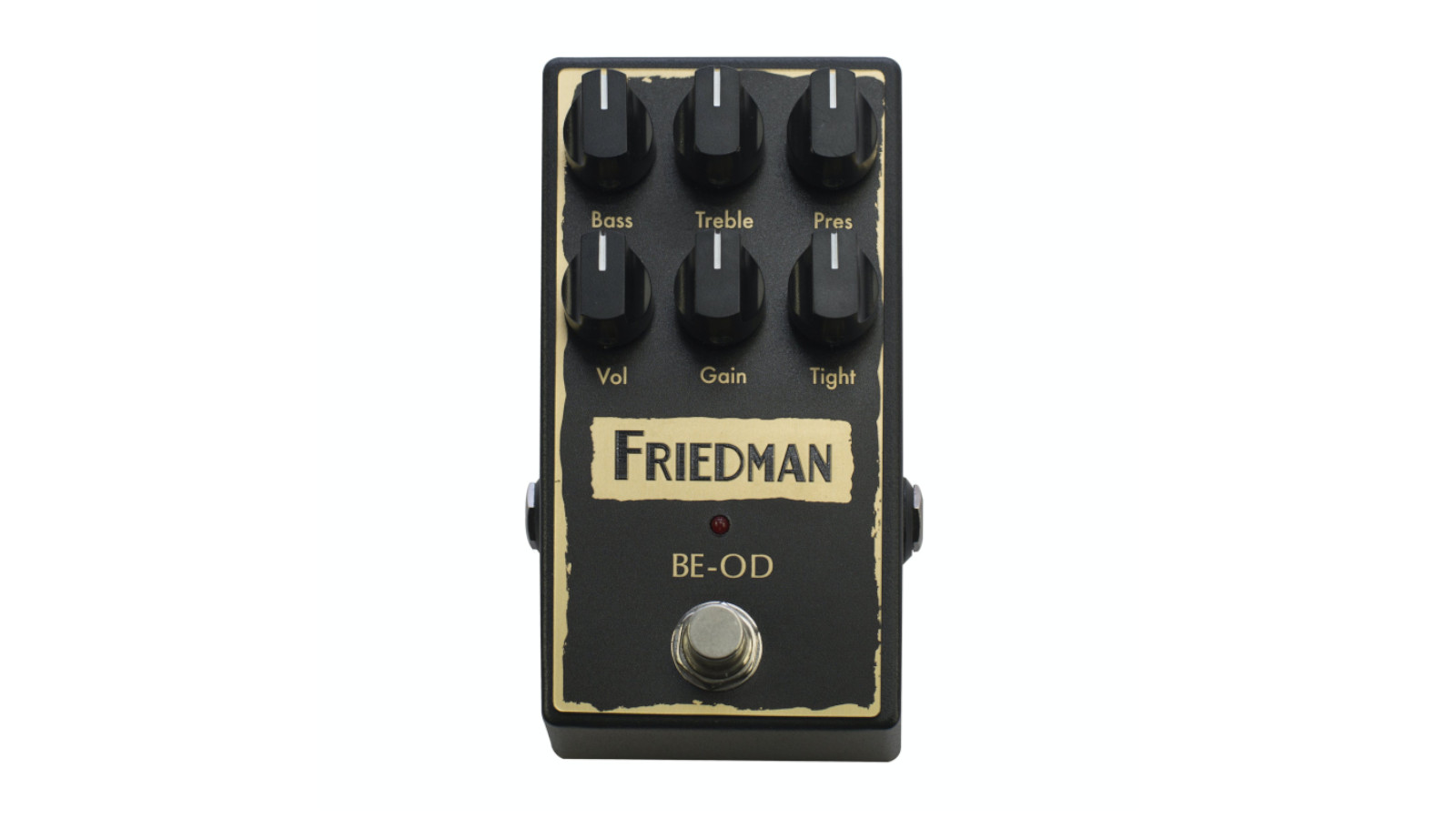
6. Friedman BE-OD
Our expert review:
Specifications
Reasons to buy
Reasons to avoid
The BE-OD is, as the design implies, modeled on the gain channel of a Marshall-style amplifier. Designed by Friedman amps, it's not quite an overdrive or a distortion, but more a gain stage in what is often called the amp-in-a-box category.
As such it has a lot of controls along the front panel, including a two-band EQ and presence control. Though it has a lot of gain on tap, it cleans up well at lower settings, and does a good job of pushing a tube amp into saturation when pulled back a bit.
However, it has to be said that the pedal shines when given a little bit of leash to cut loose.
Also consider
For me, the above pedals should cover most guitarists' needs when it comes to distortion pedals. That said, there's a lot of choice out there right now so here are some more great options for you to look at.
Hamstead Odyssey
The Odyssey is the Swiss army knife gain stage from British ampmaker Hamstead. Covering the bases from gently boosting a tube amp all the way to modern metal is a pretty big ask, but the Odyssey rises to the challenge. Despite the front-panel implying an amp-like operation with its three-control EQ, it's really more of a standalone drive pedal.
★★★★½
Revv G3 Distortion
Based on the famed Purple Channel, the G3 Distortion puts the power of a Revv amplifier onto your pedalboard. As you'd expect, the G3 delivers a sucker punch of gain, making this ideal for players looking for metal distortion. The onboard three-band EQ makes dialing in a tone a breeze, while the multiple aggression modes allow you to shape the character of gain perfectly.
★★★★☆
Boss Metal Zone
For better or worse, the BOSS Metal Zone is one of the most popular distortions of all time. Although it's often derided, it's also the most powerful, widely available distortion. The reason for that is its incredible EQ circuit – coincidentally, also the reason many players misunderstand it. The EQ allows for precise parametric control over the mid band as well as standard bass and treble controls. Getting the EQ settings wrong will result in a fizzy, thin distortion tone.
★★★★☆
FAQs
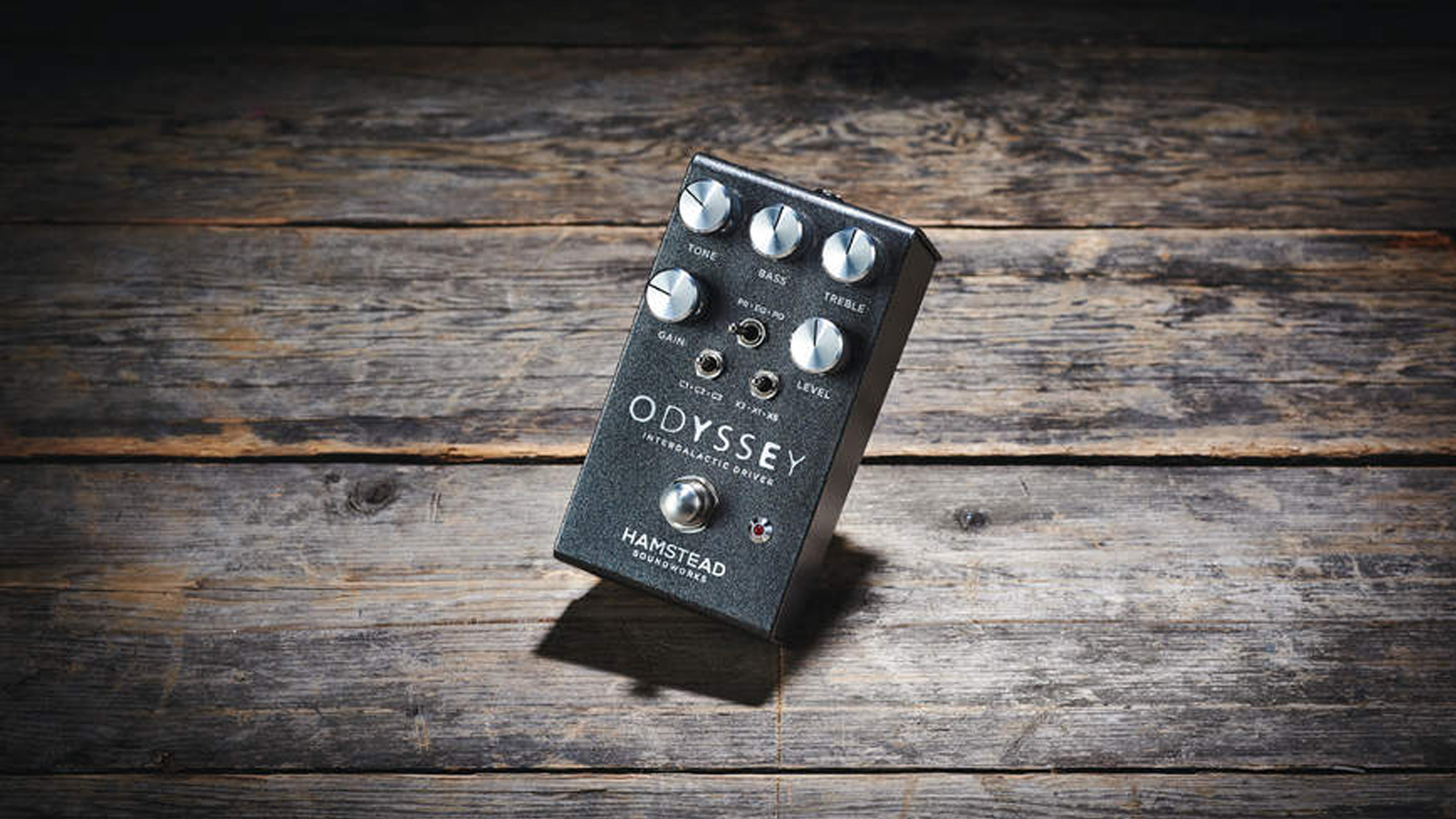
What is a distortion pedal?
A distortion pedal sits between your guitar and your amp and, when switched on, engages a circuit that introduces a gritty, dirty quality to your sound. This is achieved through hard clipping, where the peaks of your guitar’s output signal are chopped off, causing it to produce a different, compressed, harmonically rich sound. Different components can produce different styles of distortion.
When was the first distortion pedal released?
The history of distortion as an invention lies before the first distortion pedal, but the first time it was widely available at people’s feet was in 1962 with the Maestro Fuzz Tone. Whether this would be considered a distortion by modern standards is debatable, but it certainly birthed the idea of dirty tones in pedal format.
It may shock you to hear that nobody was really that interested in the Fuzz Tone and pretty much nobody bought it… until it appeared on ‘Satisfaction’ by the Rolling Stones, and the rest is history.
What’s the difference between distortion, overdrive, and fuzz?
There’s a lot of crossover between the three and, if trying to understand them in the very simplest way, you can kind of consider them in terms of dirt, dirtier, dirtiest – overdrive, distortion, and fuzz respectively. While overdrive – produced by soft clipping diodes – generally adds warmth and saturation that sounds similar to a tube amplifier naturally breaking up, distortion – produced by hard clipping diodes – typically has more dirt and produces a more aggressive, broken-up sound. Fuzz takes things up another notch, with an even angrier sound, with heavy compression of your guitar signal, giving an unmistakably squashy, thick sound.
Some overdrives may move into the realms of distortion, and some distortions might sound almost fuzz-like when pushed to their limits, but we don’t like to get pedantic about where one starts and another begins, it’s often best just to go by the manufacturer’s description. To avoid having to choose between different styles of dirt, some pedals may even have options to switch between overdrive, distortion, or fuzz, or have two effects in one so you can stack two of overdrive, distortion, or fuzz together.
How we test
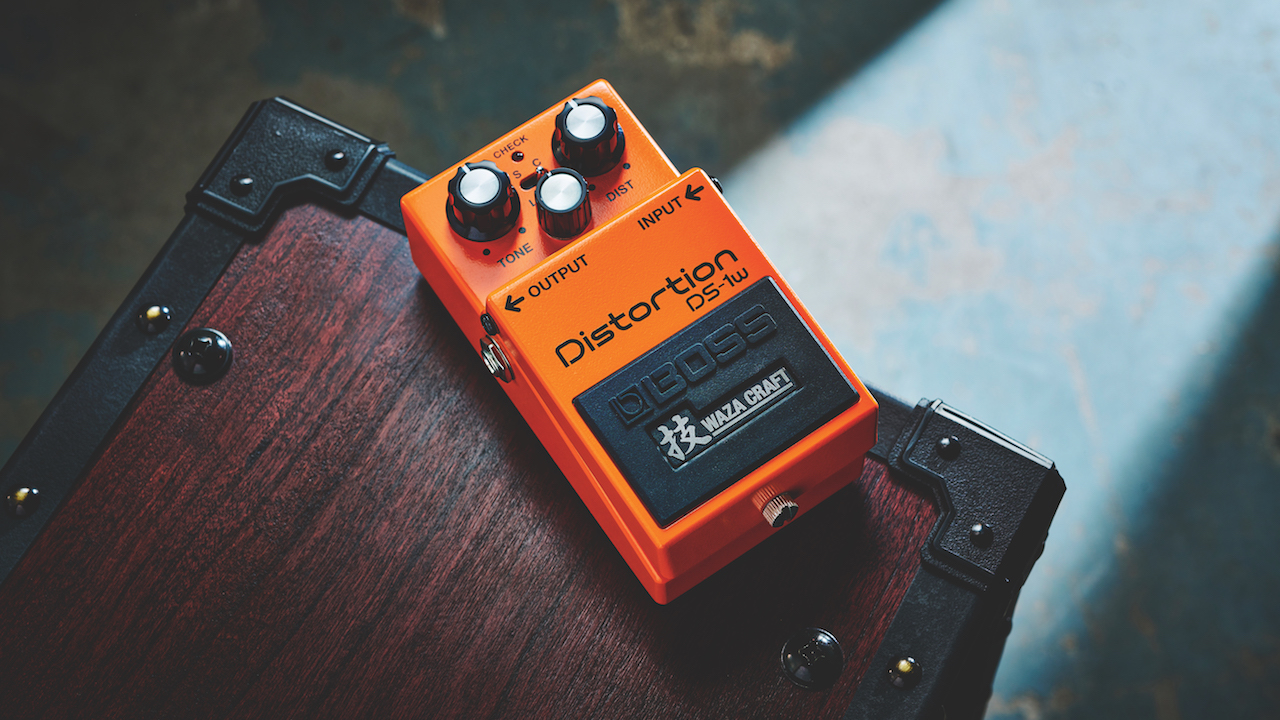
Here at Guitar Player we've got literal decades of experience reviewing gear, and it's this experience that informs the product we include in our guides. When selecting the best distortion pedals we're looking for those exceptional stompboxes that meet the needs of all kinds of guitarists, which is why we split our product choice by use case.
When testing a distortion pedal the first thing we look at is the build quality. Guitar pedals need to be sturdy enough to be repeatedly stamped on, chucked into backpacks, and taken on tour, meaning they should be strudy enough to handle all type of situations.
Once we're satisfied with the build we'll then move on to using the pedal. This could take a variety of forms whether it's plugging into an audio interface at home, as well as using the pedals in anger at the rehearsal room or at a show. For this portion we're purely looking at how easy it is to create sounds with, whether the controls are well labelled and visible in low light, as well as any othjer additional features it might present.
Next, we look at the sound. As the sound is so subjective we'll lean on our vast experience testing different distorion pedals to help make a judgement here. Pedals can have different styles of guitarist in mind, so it's important we look at the sound with an open mind. We'll try it in various combinations with other pedals to see how it stacks, as well as other effects like reverb and delay.
We'll aim to test a pedal for at least two weeks to ensure we get over the honeymoon phase, and use it in as many different scenarios as possible to get a true overview of just how good it is.
Read more on how we test gear and services at Guitar Player.
Related buyer's guides
You can trust Guitar Player.
- Connect your pedals with the best patch cables
- On a budget? Here's our list of the best electrics under $1,000
- Plug in with one of the best guitar cables
- Get the best of both worlds with the best acoustic electric guitars
- Want an affordable amp? Well, here are the best guitar amps under $1,000
All the latest guitar news, interviews, lessons, reviews, deals and more, direct to your inbox!
Alex Lynham is a gear obsessive who's been collecting and building modern and vintage equipment since he got his first Saturday job. Besides reviewing countless pedals for Total Guitar, he's written guides on how to build your first pedal, how to build a tube amp from a kit, and briefly went viral when he released a glitch delay pedal, the Atom Smasher.
- Connor Godfrey
- Daryl Robertson
- Matt McCrackenJunior Deals Writer

